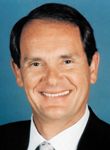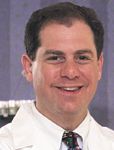- General Dermatology
- Eczema
- Chronic Hand Eczema
- Alopecia
- Aesthetics
- Vitiligo
- COVID-19
- Actinic Keratosis
- Precision Medicine and Biologics
- Rare Disease
- Wound Care
- Rosacea
- Psoriasis
- Psoriatic Arthritis
- Atopic Dermatitis
- Melasma
- NP and PA
- Skin Cancer
- Hidradenitis Suppurativa
- Drug Watch
- Pigmentary Disorders
- Acne
- Pediatric Dermatology
- Practice Management
- Prurigo Nodularis
Article
Growth in cosmetic procedures signals shift
National report — With the number of cosmetic procedures performed nationally rising, the line between dermatology and plastic surgery continues to blur as dermatologists devote more time to cosmetic procedures and plastic surgeons embrace less-invasive treatments.

According to figures released in February by the American Society For Aesthetic Plastic Surgery (ASAPS), the number of surgical and nonsurgical procedures performed in the United States last year jumped 44 percent over the previous year, to a total of nearly 11.9 million. The largest increase occurred in nonsurgical procedures, which grew 51 percent.

"Injections are less frightening to a patient than a surgical procedure," Dr. Fodor says.
The U.S. Food and Drug Administration's (FDA) approval of botulinum toxin for treating glabellar lines has erased much reluctance on the part of patients who initially worried about that agent's toxic potential.

Furthermore, injectables of all kinds hold particular appeal for male patients, who value quick recoveries perhaps more than do females. Last year, nonsurgical procedures performed on men rose nearly 80 percent.
Compared to prior years, "Cosmetic procedures in general are more readily accepted. They've really come out of the closet," Dr. Fodor says.
Increasing media coverage, particularly from makeover shows, has taught the public "there are other procedures beyond facelifts available," adds Ben M. Treen, M.D., a solo practitioner in Greenville, S.C., whose cosmetic practice has grown between 10 percent and 20 percent over the past two years.
Changing practices Clearly, changing consumer demands are changing the face of both dermatology and plastic surgery.
The American Academy of Dermatology (AAD) takes no official position regarding ASAPS research.
But based on a now 2-year-old AAD member survey, "We know that on average, dermatologists spend about 12 percent to 15 percent of their practice time doing cosmetic work, either surgical or nonsurgical procedures," says David A. Pariser, M.D., AAD secretary-treasurer. "That creates a significant worry for the specialty of medical dermatology. Because the people who do more cosmetic work tend to be younger dermatologists, it is one of the reasons why we feel there is now a workforce shortage in medical dermatology that will increase in the next handful of years."
Another force pushing dermatologists away from medical dermatology is managed care's hassle factor.
Dr. Treen says that when he decided to move more heavily into cosmetic procedures 15 years ago, "I foresaw a progressive increased regulation and decreased reimbursement looming for medicine in general. When I can, I want to deal directly with the patient for the true value of what I offer, not with a third-party insurer or Medicare."





